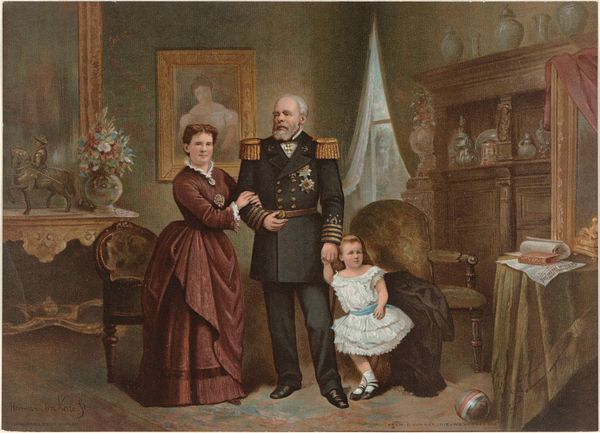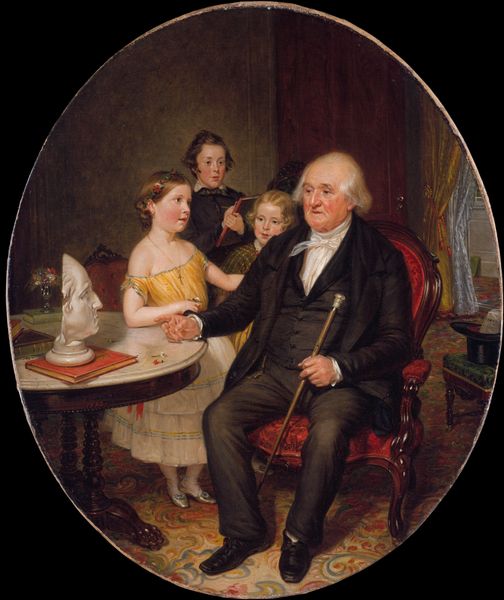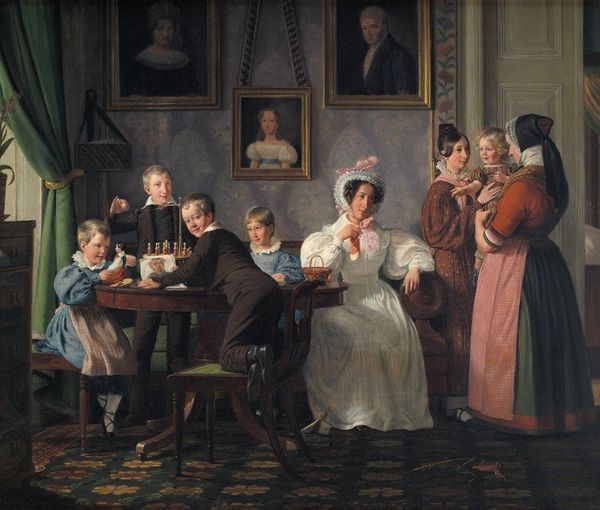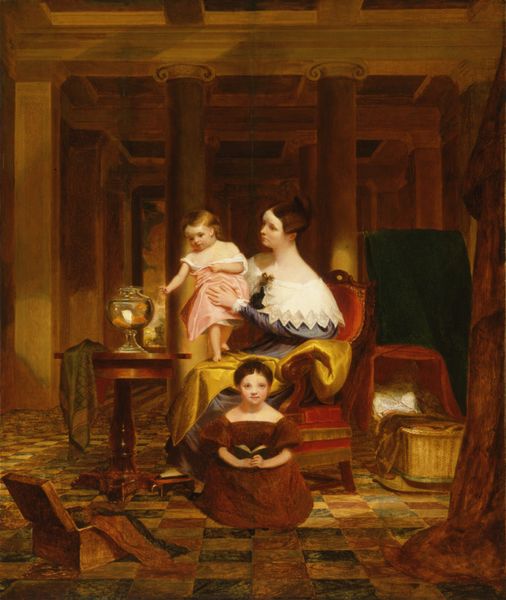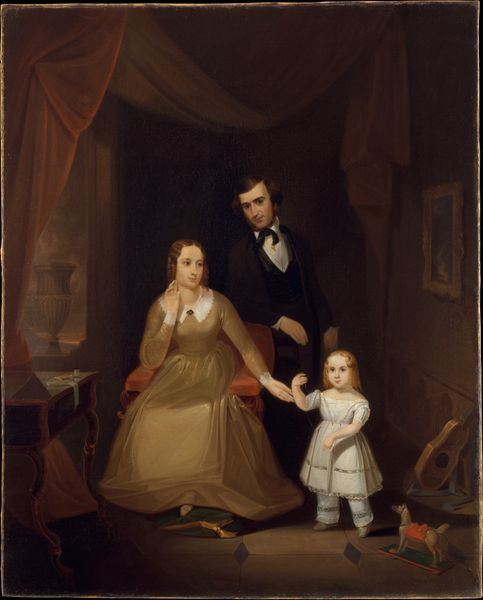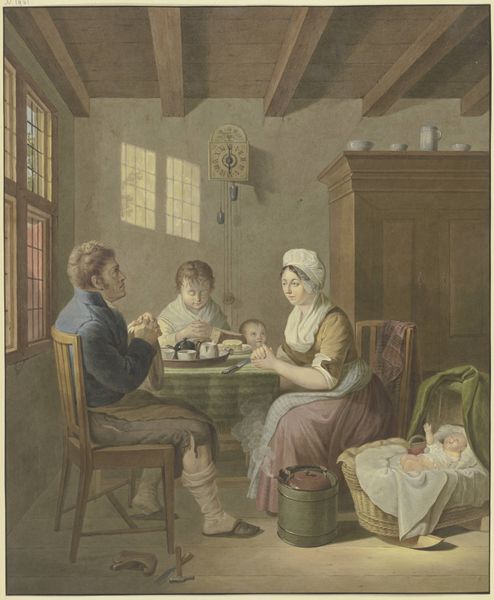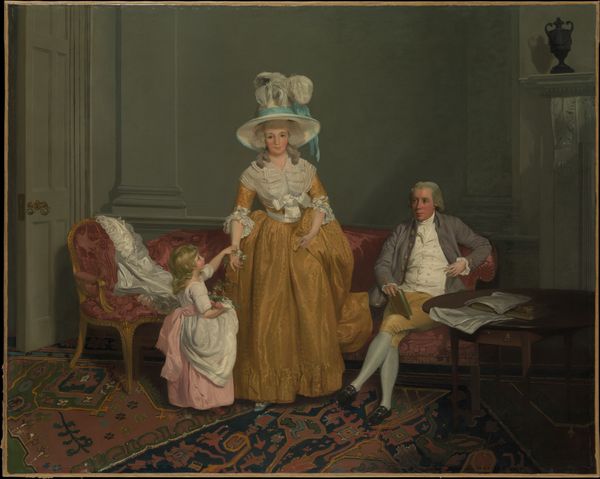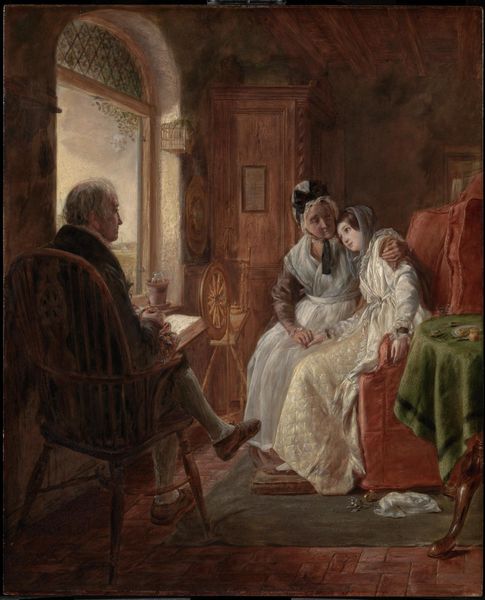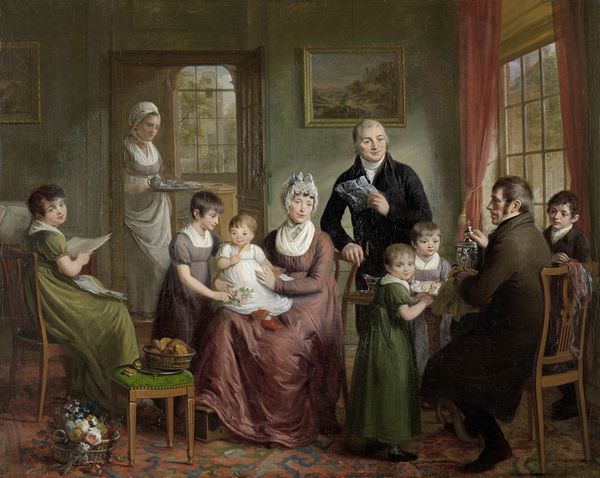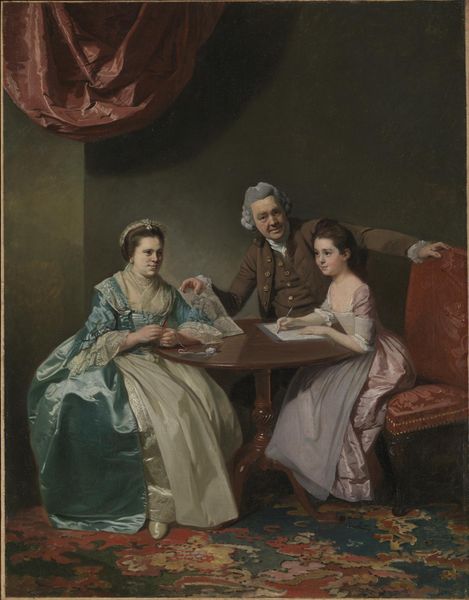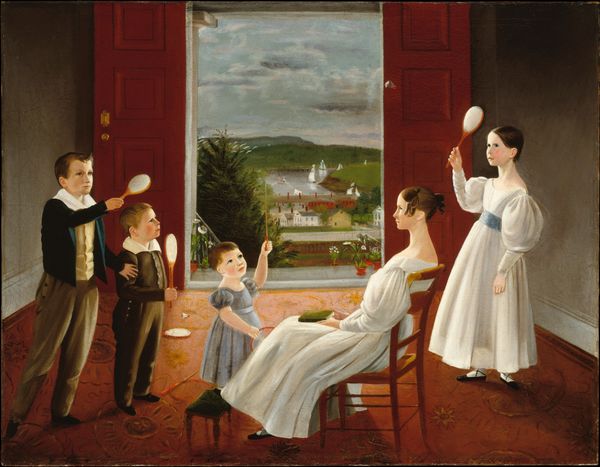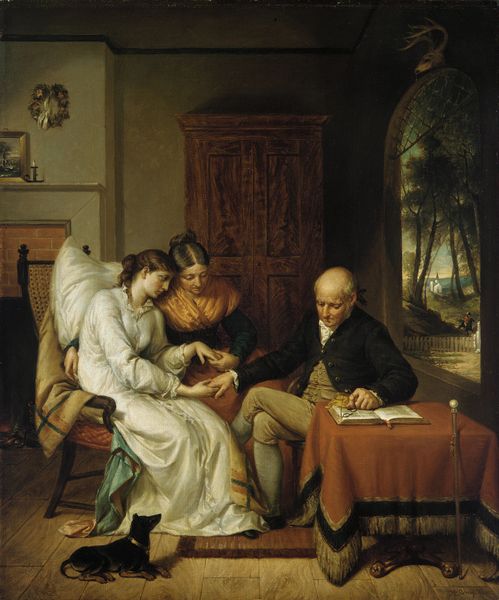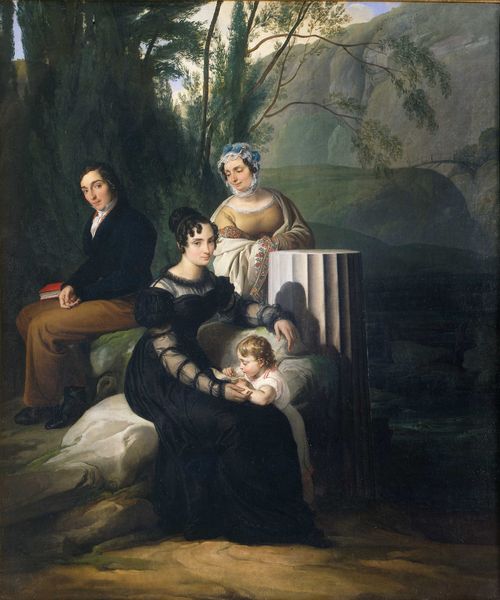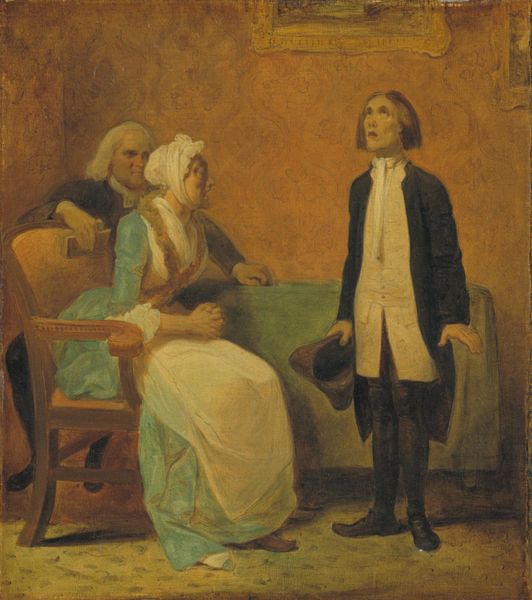
painting, oil-paint
#
portrait
#
woman
#
narrative-art
#
painting
#
oil-paint
#
figuration
#
oil painting
#
child
#
romanticism
#
genre-painting
#
academic-art
Copyright: Public Domain
Curator: "The Vicar of the Parish Receiving His Tithes," created before 1793, an oil painting by Henry Singleton. It's currently housed here at the Städel Museum. I am instantly transported to simpler times, to scenes that feel so wholesome somehow. What’s your immediate reaction? Editor: It does evoke a sense of peaceful domesticity, a tableau of English country life perhaps? Yet there’s an undercurrent, a subtle unease I can’t quite place. Look at how rigidly posed the figures are, how staged. Curator: It's true. There's a formality, an academic quality even, though softened by the sentimental Romanticism characteristic of the time. Notice the way Singleton uses light; it focuses our attention right where he wants it, doesn’t it? On that exchange between the child and the vicar. Editor: Yes, light often plays a significant symbolic role, especially in scenes depicting authority or divine right. In this case, I see the clergyman illuminated, seated in a position of power while the family appears almost as supplicants bringing offerings. Do you agree? Curator: That’s insightful, because while it presents as a pleasant genre scene, it does subtly underscore the social hierarchy. I wonder about the child, though, carrying that basket brimming with… what is it? Poultry, maybe? The expression is priceless; equal parts hesitant, proud, and maybe even burdened. Editor: The poultry functions on several levels, I think. Literally, it's the tithe itself. But visually, consider its long association with prosperity, sustenance, and also sacrifice. The child embodies innocence brought face to face with the demands of the institution. A cultural symbol itself in those times and up until now! Curator: Yes, there’s definitely a suggestion that there’s more to this seemingly placid scene. The figures tell a story that’s playing out daily in those times, one of obligation but it is a transaction where something is lost and another party gains. What does this kind of narrative offer us, viewing it now centuries later? Editor: It provides a crucial visual link to our cultural past, helping us comprehend the symbolic structures that governed lives, even ordinary lives. And perhaps it prompts questions about the present and how symbolic dynamics persist in our own societal transactions. Curator: Food for thought indeed. Editor: Exactly. Art offers multiple interpretations, inviting endless analysis across time.
Comments
No comments
Be the first to comment and join the conversation on the ultimate creative platform.
